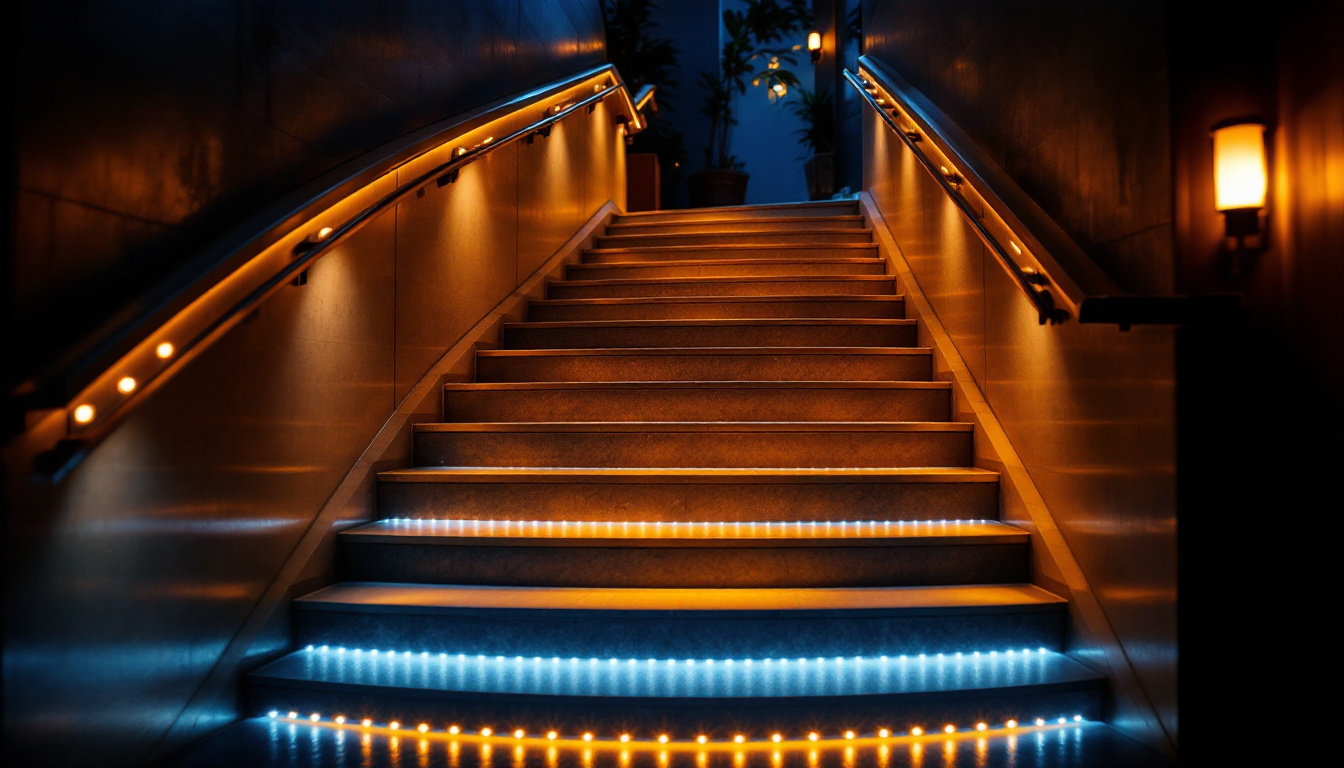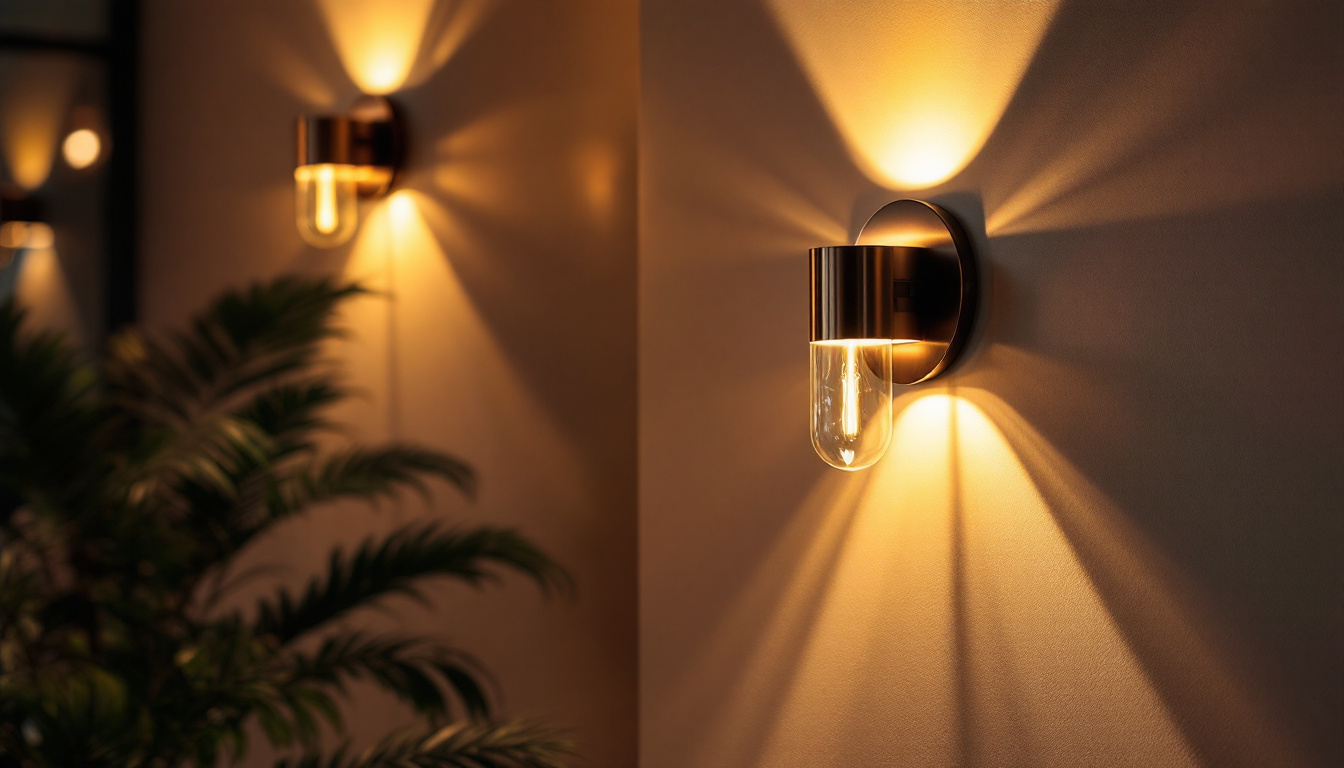
track ceiling lights have become a staple in modern interior design, offering versatility and functionality that can elevate any space. For lighting contractors, understanding the intricacies of track lighting systems is essential not only for installation but also for providing clients with tailored solutions that meet their specific needs. This article delves into the essentials of track ceiling lights, exploring their benefits, types, installation tips, and maintenance practices.
Track ceiling lights consist of a series of fixtures mounted on a track, which allows for easy repositioning and customization of lighting in a space. This flexibility makes them ideal for various applications, from residential to commercial settings. By grasping the fundamental concepts of track lighting, contractors can better serve their clients and enhance their projects.
Track lighting systems are composed of several key components: the track itself, the fixtures, and the power supply. The track is typically made from aluminum or steel and can be mounted on ceilings or walls. Fixtures can be attached anywhere along the track, allowing for dynamic lighting arrangements. Additionally, the power supply can vary, with options for hardwired or plug-in systems, depending on the installation requirements.
Understanding these components is crucial for contractors, as it enables them to recommend the best solutions for their clients. For instance, knowing the difference between a single-circuit and a dual-circuit track system can help in designing a more efficient lighting layout. Furthermore, the choice of track style—whether it be a straight line, a curve, or a more intricate design—can also influence the overall aesthetic and functionality of the lighting setup. This attention to detail can make a significant difference in how a space is perceived and utilized.
Track ceiling lights offer numerous advantages that make them a preferred choice for many projects. One of the primary benefits is their flexibility. Unlike traditional fixed lighting, track lights can be easily adjusted to highlight specific areas or objects within a room, such as artwork or architectural features. This adaptability can significantly enhance the aesthetic appeal of a space.
Moreover, track lighting can accommodate various bulb types, including LED, incandescent, and halogen, allowing contractors to choose energy-efficient options that align with their clients’ sustainability goals. This versatility not only meets diverse lighting needs but also contributes to cost savings over time. Additionally, track lighting can be an excellent solution for spaces with high ceilings or open floor plans, where traditional fixtures may not provide adequate coverage. By strategically positioning the track and fixtures, contractors can ensure that every corner of the room is well-lit, creating a warm and inviting atmosphere.
Another significant advantage of track ceiling lights is their ability to create layered lighting effects. By combining ambient, task, and accent lighting within a single system, contractors can design a more comprehensive lighting scheme that enhances functionality and mood. For example, in a kitchen, track lights can be used to illuminate countertops for cooking tasks while also highlighting decorative elements like open shelving or artwork. This layered approach not only improves the usability of the space but also adds depth and character, making it more visually appealing to occupants and guests alike.
There are several types of track lighting systems available, each with its unique features and benefits. Understanding these variations is vital for contractors looking to provide the best solutions for their clients.
Monorail track lighting features a single rail that can be bent and shaped to fit the design of a space. This type of system allows for creative lighting arrangements, making it ideal for contemporary interiors. Monorail systems often come with a variety of fixture styles, providing options that can complement different design aesthetics.
When installing monorail track lighting, contractors should consider the weight of the fixtures and ensure that the rail is securely mounted to support them. Additionally, the ability to customize the shape of the rail can lead to unique and eye-catching installations.
Standard track lighting systems consist of a straight track that can be mounted on ceilings or walls. This type is more traditional and is often seen in commercial settings, such as retail stores and galleries. Standard track lighting is available in various lengths and can accommodate multiple fixtures, making it a versatile choice for larger spaces.
For contractors, the straightforward installation process of standard track lighting can be a significant advantage. However, it is essential to plan the layout carefully to ensure even lighting coverage throughout the area.
Flexible track lighting offers a combination of the benefits found in both monorail and standard systems. This type of track can be adjusted to fit various angles and curves, allowing for creative installations in spaces with unconventional layouts. Flexible track lighting is particularly useful in residential settings where customization is often desired.
Contractors should be aware of the installation challenges that may arise with flexible track systems. Proper planning and measurement are crucial to achieving a successful outcome that meets the client’s expectations.
Installing track ceiling lights requires careful consideration and planning to ensure a successful outcome. Below are some essential tips that lighting contractors should keep in mind during the installation process.
Before installation begins, it is vital to plan the layout of the track lighting system. This involves considering the purpose of the space and identifying key areas that require illumination. Contractors should engage with clients to understand their preferences and lighting needs, which will help in designing an effective layout.
Using a lighting design software or creating a physical mock-up can assist in visualizing the final result. This step is crucial for ensuring that the lighting will be both functional and aesthetically pleasing.
Proper mounting of the track is essential for both safety and performance. Contractors should ensure that the track is securely fastened to the ceiling or wall, using appropriate anchors and screws. For heavier fixtures, it may be necessary to locate ceiling joists or use additional support to prevent sagging or damage over time.
Additionally, it is important to follow the manufacturer’s guidelines regarding weight limits and installation procedures. Adhering to these standards will help avoid potential issues in the future.
Wiring is a critical aspect of track lighting installation. Contractors must ensure that the electrical connections are made safely and in compliance with local building codes. Depending on the system, this may involve hardwiring the track or using a plug-in option.
It is advisable to turn off the power at the circuit breaker before starting any wiring work. Using a voltage tester can help confirm that the power is off, ensuring a safe installation process. For those unfamiliar with electrical work, consulting a licensed electrician may be prudent to avoid any mishaps.
Maintaining track ceiling lights is essential for ensuring their longevity and optimal performance. Regular maintenance can help prevent issues and keep lighting systems functioning effectively. Here are some maintenance tips for contractors to share with their clients.
Dust and debris can accumulate on track lighting fixtures over time, diminishing their brightness and overall appearance. Regular cleaning is necessary to maintain the aesthetic appeal and functionality of the lights. Contractors should recommend using a soft cloth or microfiber towel to gently wipe down the fixtures and track.
For more stubborn grime, a mild soap solution can be used, but it is crucial to avoid harsh chemicals that may damage the finish of the fixtures. Additionally, ensuring that the bulbs are clean will enhance their efficiency and lifespan.
Periodic inspections of the track lighting system are important to identify any potential issues. Contractors should advise clients to check for loose fixtures, damaged wiring, or any signs of wear and tear. Addressing these problems promptly can prevent more significant issues down the line.
If any fixtures are flickering or not functioning correctly, it may be a sign of a faulty bulb or wiring issue. Replacing bulbs regularly and ensuring proper connections can help maintain optimal performance.
As technology advances, upgrading fixtures and bulbs can enhance the efficiency and effectiveness of track lighting systems. Contractors should stay informed about the latest lighting technologies, such as energy-efficient LED options, which can significantly reduce energy consumption and costs.
Encouraging clients to consider upgrades not only improves the lighting quality but also aligns with sustainability goals. Providing information on the benefits of modern lighting technologies can help clients make informed decisions about their track lighting systems.
Track ceiling lights are an invaluable asset for lighting contractors, offering versatility, flexibility, and aesthetic appeal. By understanding the various types of track lighting systems, installation techniques, and maintenance practices, contractors can provide exceptional service and tailored solutions to their clients. As lighting technology continues to evolve, staying informed about the latest trends and advancements will further enhance the capabilities of contractors in the field.
Ultimately, track ceiling lights not only illuminate spaces but also create ambiance and enhance the overall design of interiors. By mastering the essentials of track lighting, contractors can elevate their projects and meet the diverse needs of their clients, ensuring satisfaction and success in their lighting endeavors.
Ready to take your lighting projects to the next level? At LumenWholesale, we provide lighting contractors with an exceptional range of track ceiling lights that combine quality, affordability, and convenience. Our spec-grade lighting products are designed to meet the highest industry standards, ensuring you deliver reliable and high-performance lighting solutions to your clients. Say goodbye to inflated markups and hello to unbeatable wholesale prices, with the added benefit of free shipping on bulk orders. Elevate your lighting game and discover the best value in wholesale lighting today with LumenWholesale.

Explore the pros and cons of LED lights on stairs compared to alternative lighting solutions.

Discover how LED lights are revolutionizing the lighting industry with their energy efficiency, longevity, and versatility.

Discover how lighting contractors are transforming spaces with wall light sconces through real-world success stories.

Discover essential information about electrical washers and their pivotal role in lighting installations.